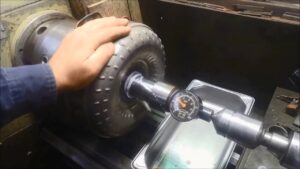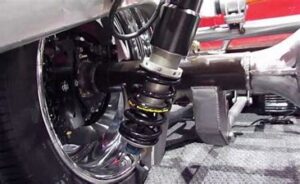The torque converter is one of the key components of your car that needs to be understood and tested in order to ensure a smooth ride. It can save you trouble down the road if you take the time to test this component before installing it. To ensure seamless power transfer, think of the torque converter as the go-between for your car’s engine and transmission. Your car moves more smoothly because of the torque converter, which helps with energy transfer similar to a relay runner passing the baton.
This post will walk you through the procedure of how to test a torque converter before installing it. However, breaking down the intricate steps into easily understood parts. Consider it your car’s pre-flight inspection. However, to make sure the torque converter, which controls automatic gearbox systems, is in excellent working order. Whether you’re a do-it-yourself enthusiast or want to learn more about your car, this book will provide useful information. So please have a seat as we discuss the importance of torque converter testing on the path to a hassle-free and pleasurable driving experience.
Table of Contents
What Is A Torque Converter In Your Car?
The torque converter is a quiet partner in the smooth transfer of power in the complex dance of an automobile’s automatic transmission system. Imagine it as a wizard at work in the background, seamlessly enabling your car to move. What precisely is a torque converter then? Imagine it as a donut-shaped, fluid-filled apparatus that sits between the engine and the transmission. Its main responsibility is to transfer rotating force, or engine torque, to the transmission so that your car can move ahead and shift gears smoothly. The magic is in the way the transmission fluid swirls inside the torque converter, forming a hydraulic connection between the engine and the transmission.

Additionally, this clever arrangement keeps the engine going even when your vehicle is stopped, avoiding stalling. Your car moves along gracefully as the torque converter’s fluid transfers power when you depress the pedal. Put more simply, the torque converter makes sure that the engine and transmission are able to interact with each other smoothly, which results in smooth driving. To appreciate the complexities of your car’s internal operations and guarantee a trouble-free drive, it is essential to comprehend this sorcery.
How To Test A Torque Converter Before Installing? [Simple Steps]
A torque converter must be tested before being installed in your car in order to guarantee a smooth ride. To ensure that your torque converter is in good condition, follow these easy steps:
1. Visual Examination:
Examine your torque converter thoroughly first. Look for any obvious damage indicators, including leaks or cracks. At this point, if you find any problems, you must fix them before moving forward.

2. Spin Examine:
Spin the torque converter while holding it by the mounting pads. It should spin freely with no odd noises or grinding. If you encounter resistance or hear unusual noises, it may be a sign of internal issues that require more investigation.
3. Inspect For Fluid Pollution:
Examine the torque converter’s fluid. It needs to be spotless and devoid of clutter. A murky look or the presence of metal particles in the fluid can indicate contamination, which may indicate internal damage. Consider cleansing the torque converter and changing the fluid if you see anything out of the ordinary.
4. Pilot Diameter Determination:
The torque converter’s centre opening, where it attaches to the transmission, is called the pilot diameter. Make sure it fits the requirements for your car. Serious problems can arise from a mismatch that results in misalignment.

5. Check The Lock-Up Clutch:
Verify the engagement and disengagement of the lock-up clutch on torque converters that have one. In order to avoid overheating and maximize fuel efficiency, this is crucial. This can be accomplished by forcing air into the torque converter and seeing how the clutch functions.
6. Equilibrium:
Maintaining balance is essential to a torque converter’s proper operation. Check to see if it is correctly balanced with a balancing machine. Vibrations and early wear on the transmission’s parts might result from imbalances.
7. Test Of Stall Speed:
To make sure that the torque converter engages and begins transferring power at the proper RPM, run a stall speed test. According to the manufacturer’s recommendations, your vehicle’s torque converter should be used. Fuel economy issues and poor acceleration can result from an inappropriate stall speed.
8. Test Of The Transmission Fluid Cooler Flow:
Verify that the cooler for the transmission fluid is operating properly. The torque converter and other transmission parts may get damaged as a result of overheating brought on by inadequate cooling. Verify that the cooler’s fluid flow is operating properly.

9. Examination Of The Mounting Surface:
Check for any damage or anomalies on the torque converter’s mounting surfaces. To ensure optimal performance, the torque converter must be aligned properly.
10. Experiential Evaluation:
If at all feasible, run the engine and install the torque converter in the transmission to conduct a dynamic test. During the operation, keep an eye out for any strange sensations, noises, or problems.
Therefore, you can ensure a trouble-free driving experience by properly knowing how to test a torque converter before installing it in your automobile by following these easy steps. For additional inspection and any necessary repairs, get advice from a trained mechanic if you have any problems throughout the testing process.
Conclusion:
Therefore, to sum up, knowing how to test a torque converter before installing it in your car is very important. Testing your torque converter before to installation is like performing a wellness check on your vehicle. It prevents problems from occurring later on, ensuring a smooth ride. You’re seizing the wheel by realizing the significance of this test, identifying typical issues, and using the appropriate remedies. Recall that a functioning torque converter not only improves the performance of your vehicle but also saves you from future hassles. Thus, spend some time testing your car before you go; it will repay you for a dependable and trouble-free ride. Enjoy your drive!
![You are currently viewing How To Test A Torque Converter Before Installing? [Simple Steps]](https://hydraulicsuspension.com/wp-content/uploads/2024/01/How-to-test-torque-converter.jpg)


